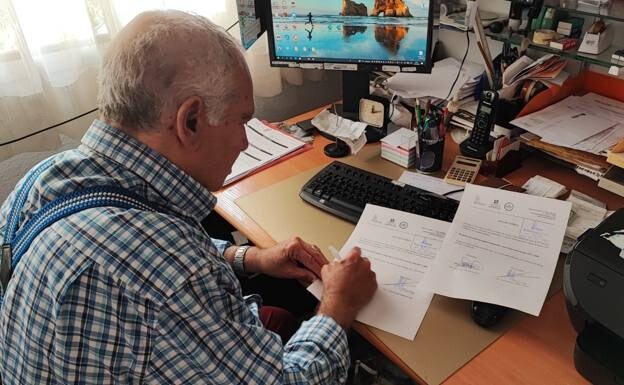

Sections
Highlight

Paco García retired in 2015, leaving behind more than four decades of work as a professional photographer. Before the world of digital cameras and smartphones, "we documented life in the village, we were at all the important events," recalls García, 73, from his home in Nerja.
"Digital and mobile phones were a disaster for us," says the photographer, who has just donated his entire archive of images in physical format to Nerja’s museum, more than 100,000 snapshots that cover a quarter of a century of local history.
There are 38 drawers with photographic material in negatives, which include the main events that took place in the town from 1977, when García began working as a photographer, and until about 2003, when he began to collect his work in digital format. "At the beginning we developed the photos in black and white, I worked for 15 years with José Padial", recalls García in reference to a fellow photographer who was the first person to take photos of the interior of the Nerja Cave after its discovery in January 1959.
Initially, all the material will be transferred to the historical archive of the Museum of Nerja where there will be an inventory created. It will have to be scanned to ensure its conservation so that in the future it can be made available to researchers and anyone else who may be interested. With this agreement, the Museum of Nerja says it has achieved one of its main objectives, which is the recovery, for cataloguing and study, of materials that compile the heritage of Nerja.
"They are social photos, of concerts, weddings, baptisms, communions, schools, but also streets and landscapes, it was the town hall that commissioned the work, but I also did it for the pleasure of taking photos, even if they were not sold," says García, who recalls numerous historic moments such as the visit of the then Prince and Princess of Asturias to the Nerja Cave in 1967 or that of Carmen Polo, wife of the dictator Franco.
The passing of the 1992 Olympic torch through Nerja, carried by Enrique López Cuenca, at that time in charge of the local athletics team athletics, is another of the moments García recalls from his 40 years as a photographer.
García decided to make this donation because he thought that when he died “nobody would take care of it and it would end up in the rubbish bin". García hopes that with this donation his legacy will be preserved, "which in 50 years' time will be much more interesting", he adds.
The retired photographer was honoured by Nerja town hall on 8 October 2021, when he received a prize for his contribution to the development of the town.

Publicidad
Publicidad
Publicidad
Publicidad
Esta funcionalidad es exclusiva para registrados.
Reporta un error en esta noticia

Debido a un error no hemos podido dar de alta tu suscripción.
Por favor, ponte en contacto con Atención al Cliente.

¡Bienvenido a SURINENGLISH!

Tu suscripción con Google se ha realizado correctamente, pero ya tenías otra suscripción activa en SURINENGLISH.
Déjanos tus datos y nos pondremos en contacto contigo para analizar tu caso

¡Tu suscripción con Google se ha realizado correctamente!
La compra se ha asociado al siguiente email
Comentar es una ventaja exclusiva para registrados
¿Ya eres registrado?
Inicia sesiónNecesitas ser suscriptor para poder votar.